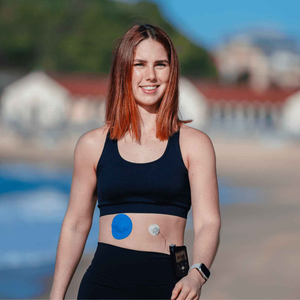Diabetes is the epidemic of the 21st century that affects millions of people worldwide. According to Diabetes Australia, approximately 1.8 million people in Australia are currently suffering from this disease. It is also estimated that around 280 people develop the disease every day. However, despite the number of people being diagnosed each year, there still isn’t a great deal of awareness about the condition. Many people are unaware of the differences between type 1 and type 2 diabetes, and the fact that there is actually a third type of diabetes called gestational diabetes. This article will discuss the differences between all three forms of diabetes.
Basic Understanding of Diabetes
The Center of Disease Control and Prevention USA defines diabetes as a chronic health condition that impacts your body’s ability to turn food into energy. When we consume food, our body breaks it down into sugar (also known as glucose), which then enters our bloodstream. If the concentration of sugar in our blood increases, our pancreas gets signaled to release insulin. The pancreas is a gland that produces insulin, and insulin is a hormone that regulates our blood sugar.
Think of blood sugar or glucose as the fuel that feeds the cells in your body, but your body needs a key for glucose to enter the cells, and that key is insulin.
The Difference Between Type 1, Type 2 and Gestational Diabetes
When most people think of diabetes, they are thinking of type 2 diabetes. A very small percentage of the population knows that there is in fact three different types of diabetes.
The straightforward distinction between type 1 and type 2 diabetes is simple to understand. In type 1, the body completely stops producing insulin. In type 2, your body either doesn’t create enough insulin, or it doesn’t properly use the insulin being produced, therefore developing an insulin resistance.
What is Type 1?
Type 1 diabetes is also called insulin-dependent diabetes mellitus (IDDM) or juvenile-onset diabetes. It is an autoimmune disease in which your immune system starts to attack and destroy your pancreas, the gland which makes insulin. More specifically, your body starts to destroy the insulin-producing Beta cells in the pancreas.
People living with type 1 diabetes have to rely on multiple daily insulin injections or continuous insulin infusion to manage their blood sugar. It is important for people with Type 1 diabetes to check their blood sugar levels throughout the day and night. This can be done by ‘finger pricks’ or by using a CGM (Continuous glucose monitoring) device.
What is Type 2?
Type 2 diabetes, also known as non-insulin or adult-onset diabetes, usually develops when there is a resistance to insulin. People with this type of diabetes either produce insufficient levels of insulin, or the cells in the body do not properly respond to the insulin being produced.
Type 2 diabetes is the most common type of the disease and accounts for almost 90% of all cases.
What is Gestational Diabetes?
Gestational diabetes mellitus, also called (GDM), is a form of diabetes that occurs during pregnancy and mostly resolves once the baby is born. However, it is important to keep in mind that some women continue to have high blood sugar levels even after delivery.
GDM usually develops in the 24th or 28th week of pregnancy. Women must get tested if they show risk factors such as polycystic ovary syndrome, obesity, lack of physical activity or the possibility of diabetes in an immediate family member. According to Mayoclinic, women from Hispanic, black, Native American and Asian ethnic backgrounds are also more likely to develop gestational diabetes.
GDM usually occurs during pregnancy because the placenta creates hormones that can result in the build-up of glucose in the body. In standard cases, the placenta can actually trigger enough insulin to handle the built-up. However, in some instances, the body can’t produce enough insulin or stops effectively using insulin; hence, blood sugar rises leading to gestational diabetes.
Development and Causes of Type 1 and Type 2
Type 1
Type 1 diabetes is also called juvenile-onset diabetes because it is often detectable at an early age. However, it’s important to remember that type 1 can occur at any point in a person’s life.
Due to the autoimmune nature of the disease, most cases occur randomly and repeatedly without any specific triggers. This makes it very difficult to understand how type 1 develops and how it can be stopped. Some scientists suggest that type 1 is caused by genes or unfavourable environmental factors like viruses and infections that can trigger the disease. It is clear that the condition is a result of an autoimmune reaction; however, there isn’t a clear consensus between researchers and scientists on the root cause of that reaction.
Type 2
Similar to Type 1, Type 2 can develop at any stage of a person’s life, but it is more frequent in middle-aged and older demographics. According to NIDDK, type 2 is most common in people above the age of 45. Unlike type 1, the symptoms of type 2 are easier to miss as they appear far slower. There are also a number of clear and agreed-upon causes of Type 2 diabetes, such as genetics, unhealthy lifestyles, hormonal imbalances, obesity and high blood pressure.
Symptoms of Type 1 and Type 2
Type 1
An article medically reviewed by Dr Marina Basina, an endocrinologist specialising in Type 1, Type 2 and diabetes technology, suggests several noticeable symptoms in people who have developed type 1. These symptoms include excessive hunger and thirst, frequent urination, blurred vision, fatigue and dramatic weight loss within a short period of time.
The same article from Healthline magazine also mentions the development of Ketoacidosis, a dangerous diabetes complication that occurs when your body produces blood acids called ketones. Symptoms of this complication can be dry mouth and skin, rapid breathing, nausea, vomiting, stomach pains, flushed face and fruit breath odour.
Type 2
Some symptoms of Type 2 are similar to type 1; however, as mentioned previously, they are more subtle and develop very slowly, so they can be easily dismissed. These symptoms include lack of energy, excessive hunger and thirst, fatigue, dry mouth, irritated skin, frequent urination, weight loss and blurry vision.
If type 2 progresses and people go on without being diagnosed, some severe and potentially dangerous symptoms can begin to appear. Issues such as a yeast infection, slower healing rates of cuts, minor injuries and sores, foot pain, dark patches on the skin and the feeling of numbness in your extremities are all related to high levels of blood sugar being undiagnosed for a long time.
Managing the two types of diabetes
Type 1
Type 1 needs to be managed from a young age to avoid serious health complications later in life. Most people with type 1 manage their disease by injecting insulin several times per day. This form of diabetes requires a more strict management process that uses multiple insulin sources and a dosage plan that depends on a person’s activity levels, routines, eating habits, and individual needs.
People with type 1 use CGM devices, insulin pens and pumps to keep track of their blood glucose levels and manage their need for insulin.
Type 2
Type 2 diabetes is often less severe, hence it can be managed using oral medication and lifestyle changes like diet and exercise. People with type 2 can also be prescribed insulin depending on their condition.
Devices Used to Manage Diabetes
Continuous Glucose Monitoring Devices
A Continuous Glucose Monitor (CGM) is a device used to measure blood glucose levels throughout the day or night. Unlike traditional blood tests, which only measure glucose at a single point in time, CGMs continuously track glucose levels and transmit this information to a receiver in real-time via a small sensor inserted just underneath the skin. CGMs help patients and their healthcare providers determine insulin doses more precisely than with conventional self-monitoring of blood glucose (SMBG).
The small sensor that penetrates the skin uses a tiny needle or filament to measure interstitial fluid (fluid between cells), using an electrical current. It then communicates this information wirelessly with an external monitor. CGM data is translated into digital information that alerts people when they have reached high or low levels of glucose.
If you would like to know more about CGMs, we covered the Different Types of CGMs Available for Type 1 Diabetes in one of our previous blogs.
Insulin Pens (Used for Type 1 and sometimes prescribed for Type 2)
Insulin pens are very small and portable devices that can be used to inject insulin. They come with disposable cartridges or cartridges that can be re-filled with insulin. Insulin pens should be used with caution in regard to the prescribed dosage.
Insulin pumps are becoming increasingly popular as they provide long-lasting and continuous dosages of insulin with a steady flow rate, making it easier to control blood sugar levels. They can be programmed with different settings, such as dosage intervals, depending on your specific needs. The pump is attached to the abdomen with a needle that delivers or suspends insulin whenever it detects that blood sugar levels are too high or low.
Nowadays, many people with type 1 diabetes prefer to using insulin pumps along with their CGMs. They are portable, easy to use, and can help to reduce the risk of complications. Insulin pumps can be used both for short-term and long-term diabetes management, depending on your personal requirements. However, this method is not always suitable for everyone, and it is best to consider all options carefully before deciding to use an insulin pump.
Is There are a Cure for Type 1 and Type 2 Diabetes?
Unfortunately for the time being, there isn’t a permanent cure for the type 1 or type 2 diabetes. However, it’s important to remember that diabetes is no longer a death sentence, and with the help of modern-day technology, people with diabetes are more than capable of living a long and fulfilling life.
There are many emerging technologies and research solutions that promise a better and more efficient management of diabetes, and medical R&D companies worldwide are working hard to develop better solutions for treating the condition.
Wrapping Up
Explore the world of effective diabetes management through our CGM Adhesive Patches. Seamlessly integrate them into your routine, enhancing the ease and precision of continuous glucose monitoring. Take charge of your well-being. Try our patches today and experience the next level of diabetes care. Your path to a healthier life starts here.





